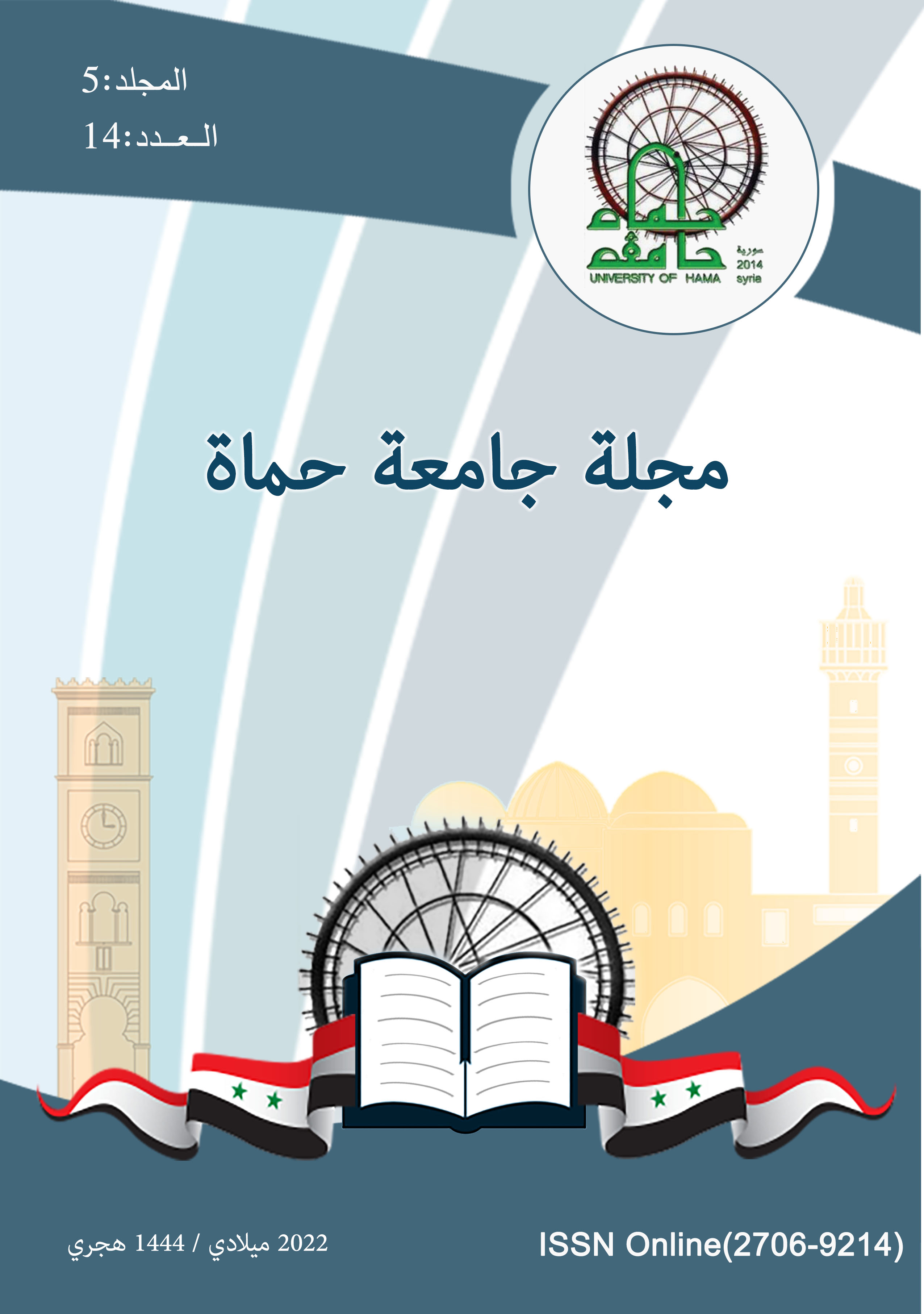The effect of Eimeria Acervulina and Tenella infection on production performance in broiler chickens
الملخص
Coccidiosis in chickens is one of the most common and widespread diseases of poultry. Coccidiosis can lead to serious economic losses due to elevated morbidity and mortality and low feed conversion ratio as a result of inflammation and damages to the intestinal mucosa. E. acervulina is one type of Eimeria diseases in broiler chickens, which usually causes subclinical infection. While E. tenella is one of the most economically important diseases in broiler chickens which causes hemorrhage in the cecum. In order to study the production performance, an experimental trail was designed where broilers were divided into three groups of 50 1-day-old chicks and raised up to 42 days. The production efficiency post challenge with Eimeria acervulina and E. tenella was studied by calculation of both FCR and EPEF for the three experiment groups, It was proved that the E. acervulina and E.tenella infection caused significant decrease in feed intake and consequently in body weight gain, and an increase in the values of (FCR), This highlights a detrimental effect on the performance parameters of broiler chickens. The FCR in the E. acervulina group was 1.866 and in the E. tenella group was 1.787, with significant difference between these E. acervulina and control group (P<0.05). When comparing the european production efficiency factor between both infected and control group the EPEF was 365.588 in control group , 226.25 in E.acervulina and 224.371 in E. tenella group, with significant differences between both infected group and control group (P<0.05). These findings could be used to further elucidate the serious damage to the host health caused by species of Eimeria infections
References
-2د. محمد نعيم, & أ. د. محمد فاضل. (2021). دراسة التغيرات المرضية المصاحبة لإصابة دجاج اللحم بالأيمرية تنيلا في ظروف التربية الحقلية في محافظة حماه. مجلة جامعة حماه. (4).
3-Adamu ,M.;Boonkaewwan,C.;Gongruttananum,N.;and Vongpakorn, M., (2013).
Hematological,biochemical and histopathological changes caused by coccidiosis in chickens .Kasetsart J.Nat.Sci,47(2): 238 - 246.
4-Allen, P. C., & Fetterer, R. H. (2002). Recent advances in biology and immunobiology of Eimeria species and in diagnosis and control of infection with these coccidian parasites of poultry. Clinical microbiology reviews, 15(1), 58-65.
5-Assis, R. C. L., Luns, F. D., Beletti, M. E., Assis, R. L., Nasser, N. M., Faria, E. S. M., & Cury, M. C. (2010). Histomorphometry and macroscopic intestinal lesions in broilers infected with Eimeria acervulina. Veterinary parasitology, 168(3-4), 185-189.
6-Badran, I., and Lukesova, D., (2006). Control of coccidiosis and different coccidian of
chicken in selected technologies used in tropics and subtropics. Agri. Tropica ET Subtropica,
39 (1): 39-44.
7-Bowman DD and Lynn RC (2008). Georgis Parasitology for Veterinarian,8th edition, W.B.SAUNDERS COMPANY,USA.
8-Bozkurt, M., Aysul, N., Kücükyilmaz, K., Aypak, S., Ege, G., Küçükyilmaz, K., ( 2014)
Efficacy of in-feed preparations of an anticoccidial, multienzyme, prebiotic, probiotic, and
herbal essential oil mixture in healthy andfffffffff spp.-infected broilers. Poultry Science,
93:389-399.
9-Carmichael, I. and Melb, D.V. (1998). Coccidiosis, Chief Vet. Parasitol. South Australia. In Soulsby, E. J. L. (1982). Helminthes, arthropods and protozoa of domestic animals. 7th ed. Bailliere Tindall, London, UK. pp. 981-1028.
10-Conway, D. P., & McKenzie, M. E. (2007). Poultry coccidiosis: diagnostic and testing procedures.
John Wiley & Sons.
11-Conway, D. P., Sasai, K., Gaafar, S. M., & Smothers, C. D. (1993). Effects of different levels of oocyst inocula of Eimeria acervulina, E. tenella, and E. maxima on plasma constituents, packed cell volume, lesion scores, and performance in chickens. Avian Diseases, 118-123.
12-Conway, D. P., & McKenzie, M. E. (1991). Poultry coccidiosis diagnosis and testing procedures, Pfizer. Inc., New York, NY.
13-Costa, C., Gomes, R., Melo, M., & Ribeiro, M. (2001). Eimeria parasites of domestic fowl: genetic relationships of different isolates estimated from random amplified polymorphic DNA. Parasitology research, 87(6), 459-466.
14-Györke, A., Kalmár, Z., Pop, L. M., & Şuteu, O. L. (2016). The economic impact of infection with Eimeria spp. in broiler farms from Romania. Revista Brasileira de Zootecnia, 45(5), 273-280.
15-Hortvikova M and Bedrnak P (2002). The sporulation of oocysts of fowl’s coccidia and possibilities to influence this process, department of Protozodogy, Jilove u Prahy, Gzech Republic. 249-254.
16-Huff, G. R., Huff, W. E., Jalukar, S., Oppy, J., Rath, N. C., & Packialakshmi, B. (2013). The effects of yeast feed supplementation on turkey performance and pathogen colonization in a transport stress/Escherichia coli challenge. Poultry science, 92(3), 655-662.
17-KIM, Woo H.; CHAUDHARI, Atul A.; LILLEHOJ, Hyun S. Involvement of T cell immunity in avian coccidiosis. Frontiers in immunology, 2019, 10: 2732.
18-McDougald L. R., Fitz-Coy S. H. ( 2013) . Coccidiosis in Diseases of Poultry. 13th ed. A John Wiley and Sons, Inc, PP. 1148-1166.
19-Persia, M. E., Young, E. L., Utterback, P. L., & Parsons, C. M. (2006). Effects of dietary ingredients and Eimeria acervulina infection on chick performance, apparent metabolizable energy, and amino acid digestibility. Poultry science, 85(1), 48-55.
20-Reid, W.M. (1978). Coccidiosis. In: Disease of poultry. Ed. By: Hofstad, M.S.; Calnek, B.W.; Helmboldt, C.F.; Reid, W.M. and Yoder, H.W. Iowa State University press. pp. 692-716.
21-Ruff, M.D. (1998). Why can’t control Coccidiosis? World poultry. Poult. Sci. 14: 30-31.
22-Schnieder T and Tenter AM (2006). Erreger von Parasiten. Taxonomie, Systematik und allgemeine Merkmale. In Schnieder T, (ed)Veterinärmediziniche Parasitologie. 6. Aufl. Stuttgart: Parey Buchverlag.
23-Soulsby, E.J.L. (1982). Helminthes, Arthropods and Protozoa of Domestic animals, 7th Ed. Bailliere Tindall, London, UK., pp. 981-1028.
24-Sun, X. M., Pang, W., Jia, T., Yan, W. C., He, G., Hao, L. L., ... & Suo, X. (2009). Prevalence
of Eimeria species in broilers with subclinical signs from fifty farms. Avian diseases, 53(2
), 301-305.
25-Williams, R. B. (1999). A compartmentalised model for the estimation of the cost of coccidiosis to the world's chicken production industry. International journal for parasitology, 29(8), 1209-1229.
26-Zajac, A. M., & Conboy, G. A. (Eds.). (2012). Veterinary clinical parasitology. John Wiley & Sons.
27-Zhang, Z. and Zeng, M. (2005): Effects of Pediococcus-and Saccharomycesbased probiotic (MitoMax) on coccidiosis in broiler Researchs advance of drug resistance in chickens coccidian. Chinese J. Vet. Parasitol. 13: 29-36.


